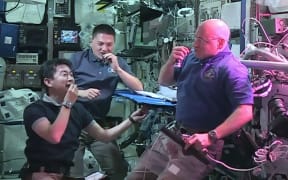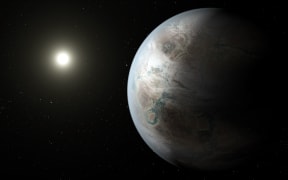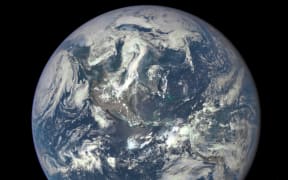With little sign of life in the sands of Mars, humanity's best bet for finding alien life could be locked beneath the thick ice on the Jupiter moon of Europa.

A color view of the surface of Jupiter's icy moon Europa, made from images taken by NASA's Galileo spacecraft in the late 1990s. Photo: AFP
NASA is planning a $2 billion mission to Europa in the next decade, and scientists believe it will offer one of the best opportunities to find alien life in our solar system.
The 3,100-kilometre wide Europa is covered by a sheet of ice dozens of kilometres thick, but a huge ocean of liquid salt water that is about 20km deep is thought to exist beneath it. While Europa is about a quarter the size of Earth, this vast ocean could hold twice as much water as all of Earth's oceans combined.
Dr Louise Prockter - the Deputy Project Scientist on NASA's new flagship mission to Europa - spoke to Nine to Noon this morning about the plans to get to the faraway moon.
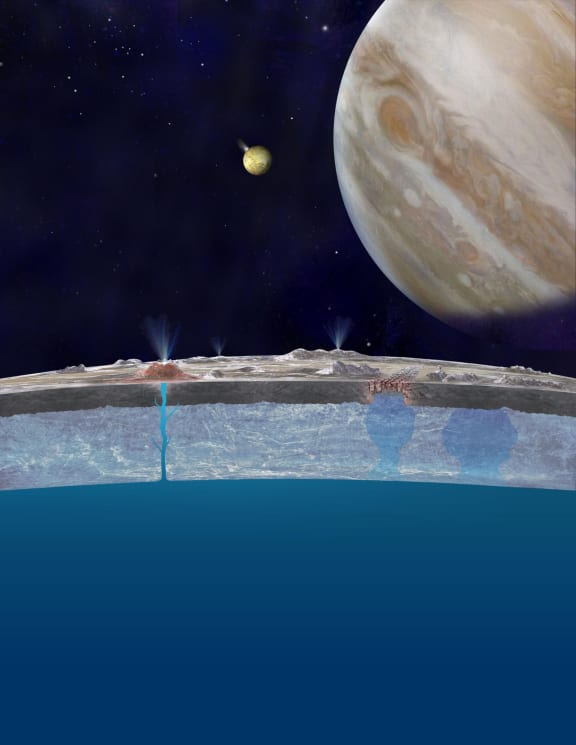
This NASA artist's concept illustration from 2013 shows Europa (foreground), Jupiter (right) and Io (middle). Photo: AFP
Dr Prockter said the water believed to be locked beneath the ice on Europa and the energy produced by the moon's orbit of Jupiter were the major ingredients for life to be found.
Up to a few decades ago, scientists believed that sunlight was also necessary for life, but Doctor Prockter said this changed after the discovery of huge areas of fauna on hydrothermal vents deep under earth's oceans, or on the bottom of ice sheets, where sunlight never reached.
"That opened up everyone's eyes to the idea that life can survive in extreme environments."
Data that was collected from the Galileo space probe around Jupiter in the 1990s pointed towards a salt water ocean beneath Europa's surface, but Dr Prockter said there were still a lot of questions to answer.
"We don't know what the dark material we see on images of the moon's surface is. It might be material that is coming out of the ocean, which means we may be able to sample the surface without having to get through the ice.
"We don't currently know how to melt through that ice and still communicate back to the surface, but people are studying that now."
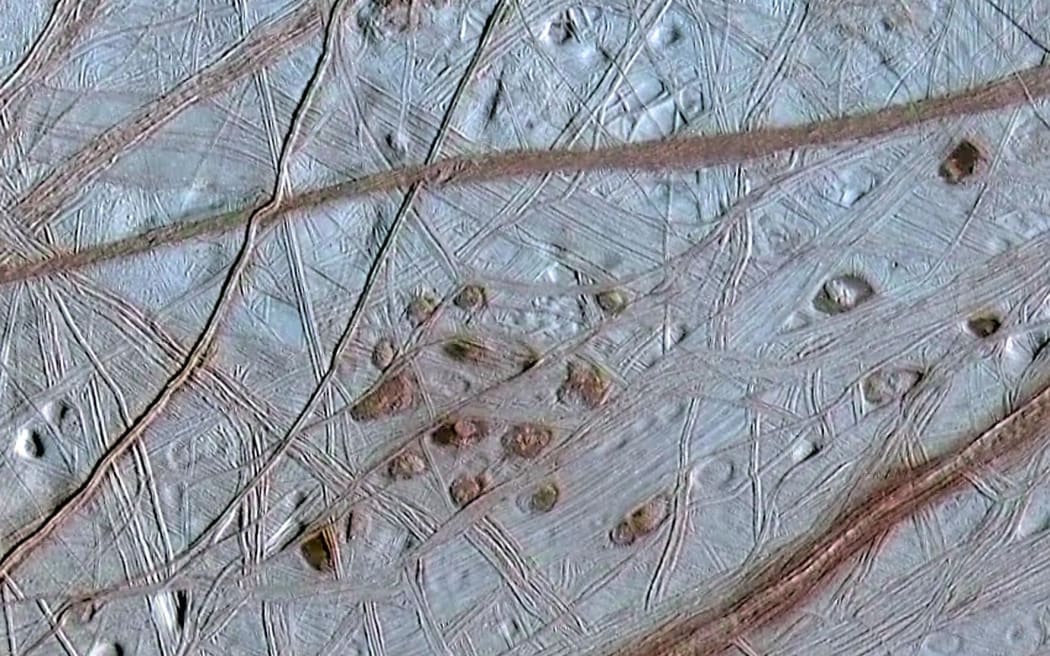
The surface of Europa is covered in a thick layer of ice. Photo: AFP
The first aim for NASA was to get back to Europa with instruments to gather more data that will reveal if it did have habitable conditions and was worth sending follow-up missions.
Getting back to Europa - which is about 600 million kilometres from Earth - offered many challenges, including landing on a moon with no atmosphere at that distance, with the possibility of piggy-backing on other probes to get to that area of the solar system.
But Dr Prockter told Nine To Noon the enormous effort was worth it.
"We're humans and we have a desire to understand our environment and our world, and we have a need to explain our place in the universe. There are a lot of benefits from the space industry, but generally speaking its so inspirational, and gets kids interested in science and engineering as a career. People are just fascinated by it."


